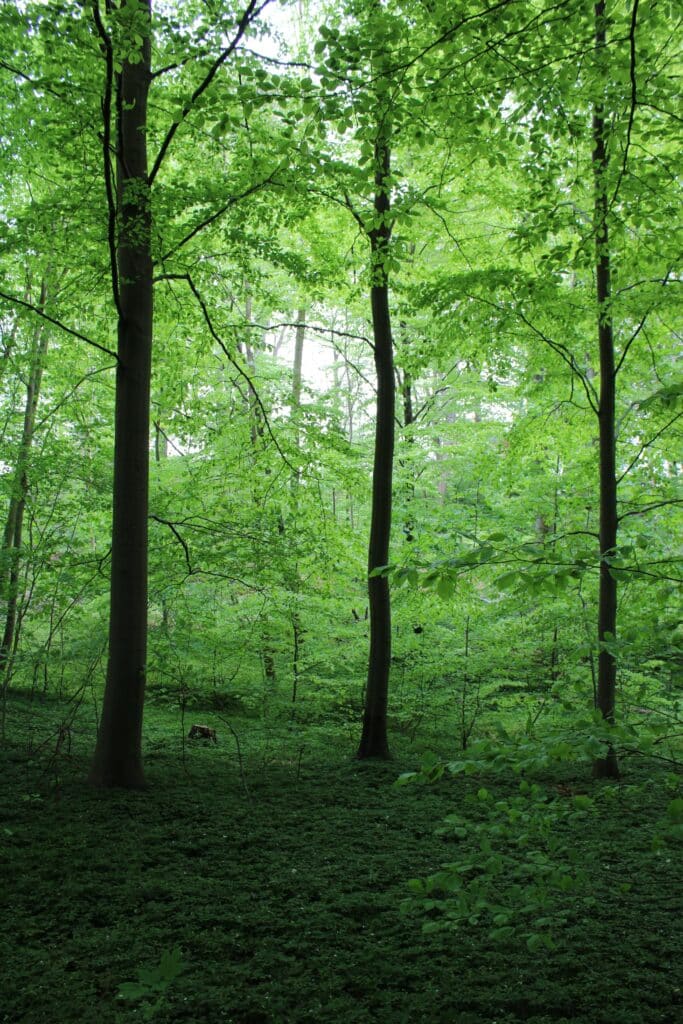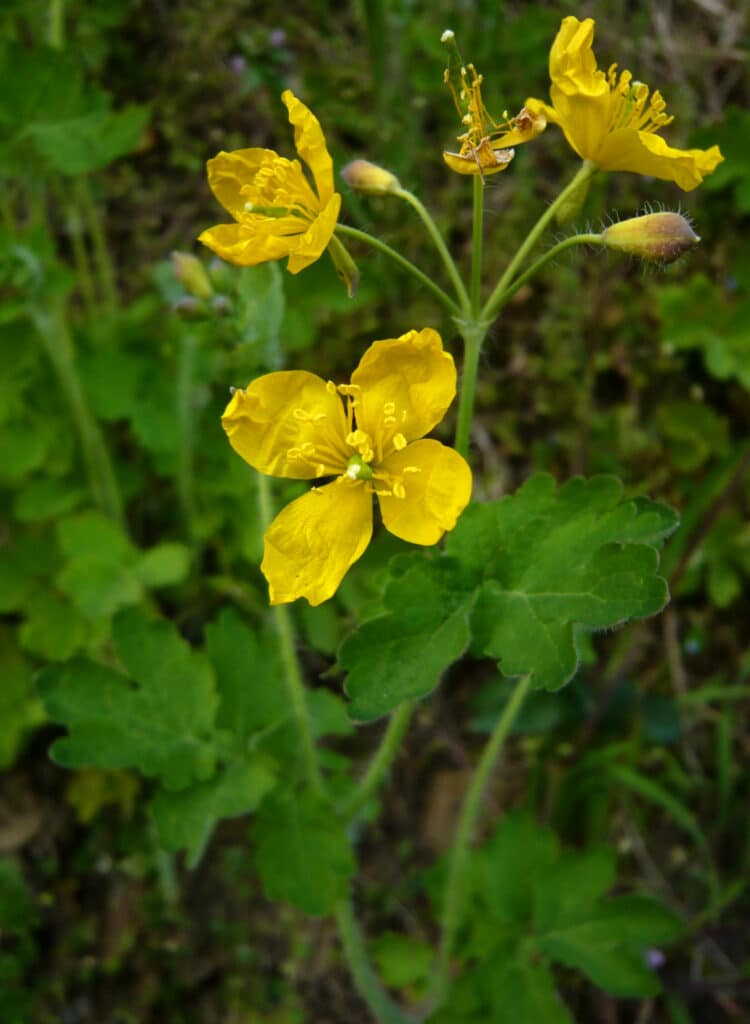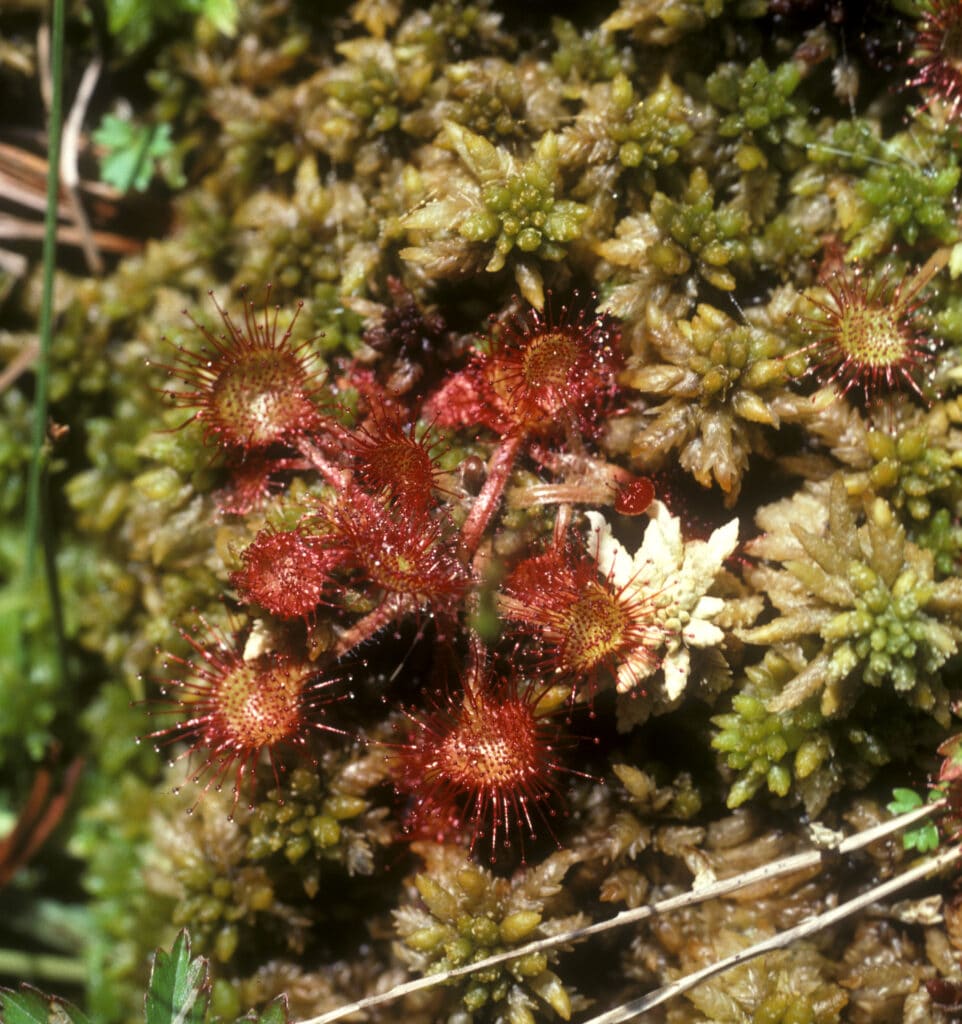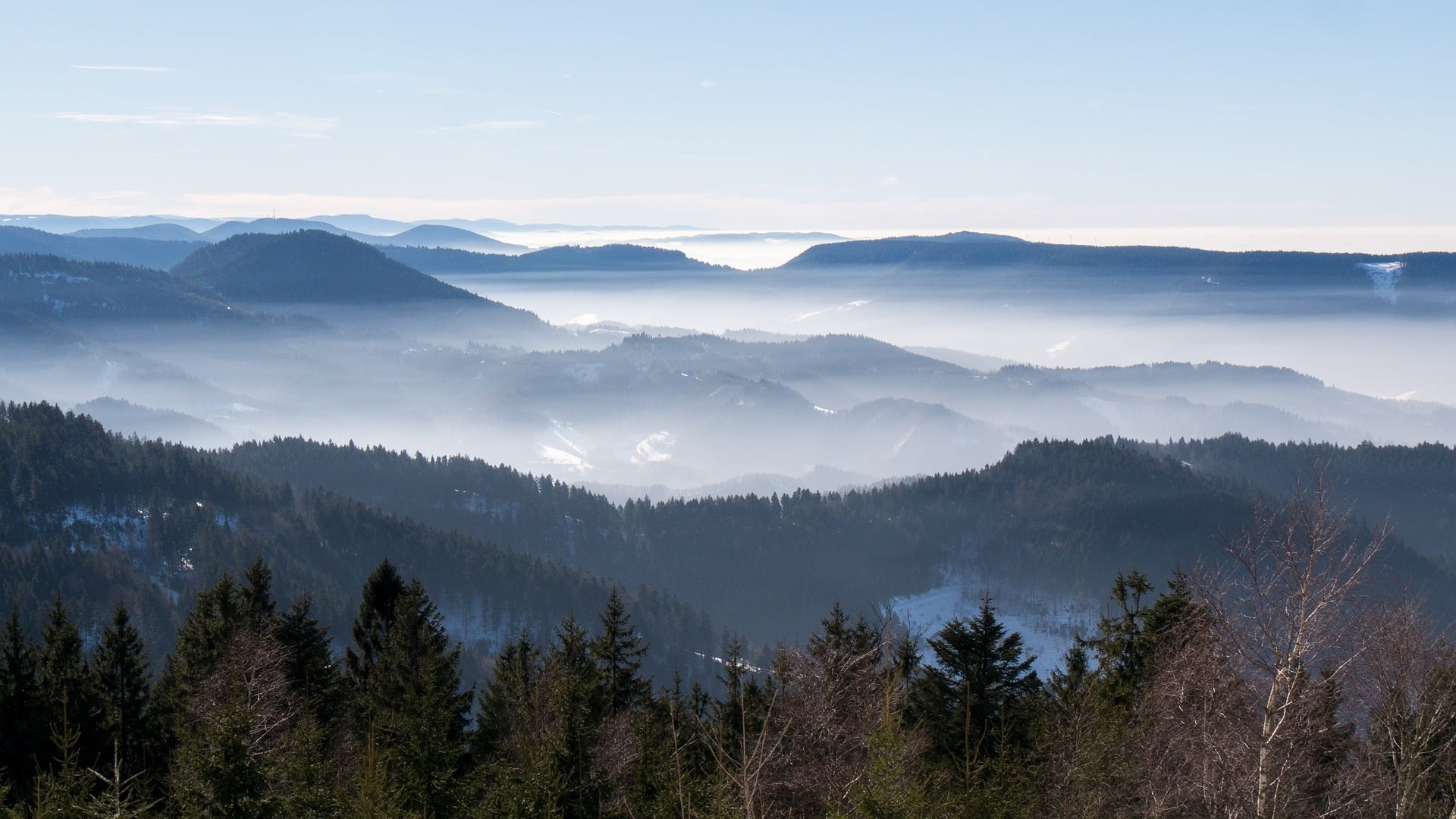My father has taken up the post of Director of the Bains-les-Bains spa in the Vosges, where I’ll be spending all my vacations from now on. This will be my refuge. We have a slightly eccentric cleaning lady, Thérèse, in her sixties. Orphaned, she was raised by her godfather, who left her a small house in Les Grands-Prés, a few kilometers from the village. My rejection of conformism and my love of nature resonate with her.

Thérèse’s lean, lean, bony face is accentuated by her gray hair pulled back, but beneath her apparent humility lies a fierce will. She has a real passion for rocks. Every time she goes for a walk, she brings back stones with curious shapes that strike her as remarkable. She arranges them artistically in her garden and admires them daily. When I visit her, she shares her enthusiasm with me: her stones really are her friends, she loves them; I wouldn’t be surprised if she talked to them when she was alone. Thérèse is, let’s say, an original… She’s an inspiration to me. What she perceives in nature fascinates me. She’s a real woman of the woods.

Mushrooms abound in our region. My parents are assiduous mushroom pickers. And careful ones at that: we scientifically identify the products of our harvests with the help of a book illustrated with color plates. In fact, we generally only eat species we know well. Experimentation is rare. We do, however, adopt the golmote or amanite vineuse, a cousin of the deadly phalloid and resembling the amanite panthère, which is only slightly less dangerous. But the characteristic reddish hue of the foot or cap at the slightest wound should, logically, prevent any confusion, whereas the panther is always pure white. And above all, what a delight! The golmotte has a firm texture without being tough, and a very fine, nutty-sweet flavor. After all, it’s a cousin of the true oronge or “amanite des Césars”, a superb mushroom with a bright orange cap, lemon yellow on the stem and lamellae[1]The few enthusiasts who have tried it consider it the best of all.
Thérèse also picks mushrooms. But her approach is very different. She’s not really looking for precision: isn’t it enough to boil them to make poisonous mushrooms edible? Perhaps not quite. One day, Thérèse picks up some lovely, hardly bizarre specimens, with their whitish, slightly conical caps, slightly split at the edges, which she prepares as she has done a hundred times before. But when night comes, she starts to sweat profusely, and then her vision starts to blur. The walls of the room become distorted and close in. Thérèse falls to the floor and vomits repeatedly. It was there that her neighbors found her the next morning, barely conscious. In bad shape, but alive. If she hadn’t boiled her mushrooms before eating them, Thérèse would probably have died. This crime of lèse-papilles enabled her to survive a mycological terror, Patouillard’s inocybe!
Thérèse is also interested in plants. She has an old treatise on medicinal plants, which she lends to me and from which I copy extracts by hand. She also cuts out newspaper articles about the virtues of simple plants. I’m astonished to discover that it’s possible to make herbal teas with more than just mint or lime. Hawthorn, with its graceful red berries, is good for the heart. Valerian root, whose scent attracts cats, puts out of kilter nervous systems. And passionflower is relaxing. I did a three-week course of it, and it paid off: I slept like a baby and my anxieties went away.

The beautiful chelidonia, with its elegant, rounded leaves and flowers with delicate yellow petals, has the particularity of containing an orange juice that stains the fingers. This latex is said to eliminate warts. As it happens, I’m suffering from a plantar wart that has been growing strongly over the last few months and is bothering me. So I decided to try applying chelidonia latex to it three times a day, conscientiously. It’s not easy, because not only do I have to think about it, I also have to take my shoes off each time. But the motivation is there. After eight days, the warty tissue is sufficiently decomposed for me to remove it. And it works. The wart never came back. My experiments with plants have only just begun.
It was Thérèse who introduced me to my future botany teacher, Henri Martin, her neighbor. Over eighty years old, this former schoolteacher doesn’t strike me as an old man. He is slim and small in stature, with a slightly old-fashioned elegance about him. In his narrow face, his clear eyes sparkle with dynamism, answering the knowing smile that often appears beneath his white moustache. But there’s an unmistakable authority about him: with his kepi and uniform, he must have been perfect as a non-commissioned officer in WW14. I’ll hear his stories of the defense of Vieil-Armand more than once, but I love listening to him talk about plants. Henri Martin is a member of the Société Botanique de France, and a poet to boot. A prolific poet, he has written hundreds of classic sonnets on the plants of “la Vôge”, which he knows and cherishes better than anyone else.

Almost every day, I visit him in his isolated house, bordered by the forest. The botany lesson begins at the doorstep, even before we reach his garden on the other side of a stony path. The stone wall that supports it, a veritable suspended natural garden, gives shelter to little marvels: the delicate cymbalaria or “ruin-de-Rome”, with its pretty pale purple flowers; the wall pepper or pungent sedum, a fat plant with yellow flowers that stings the tongue when you bite into its short, fleshy leaves; miniature ferns such as the silver-tinged doradilla and the capillary fern with its hair-thin stalks – which, he explains, was once used to make a cough syrup that, when mixed with milk, gave the “Bavarian”, a drink that was very popular in the 18th century…
A few steps lead to a prodigious garden. It’s not one of those vegetable gardens where the rows of vegetables are drawn up to the line. None of the variegated leaves and oversized flowers of modern ornamentals, heavy and outrageous, so appealing to today’s bad taste. No, at Henri Martin’s, leeks stand side by side with sweet potentillas dotted with yellow spots, the azure blossoms of borage contrast with the red of tomatoes, the rare pink-flowered niella des blés boldly outstrips the clumps of green beans, while at the foot of the trees, fragrant ground ivy raises its violet-blue flowering stems above the grass that others would have already mowed. Freedom and harmony reign here. It’s bliss!
Henri Martin comments on each plant. He teaches me its Latin name, the etymology of which is a fascinating story, its popular names, the tricks it uses to survive the ruthless competition from other species, its tricks for attracting pollinators, the causes of its fragrance, all of which hold no secrets for him. He knows how to read plants and shows me the signs that characterize them: the swinging stamens of meadow sage, the long nectar-filled spur of certain orchids, the tendrils so different from vetch or bryony, the enormous root of the latter nicknamed the “devil’s turnip”. For him, the alkékenge with its calyxes[2] swollen calyxes is called “love in a cage”; with its pink, crinkled flowers, the twisting bindweed becomes “the shirt of the little Jesus”… Almost every comment is punctuated by the recitation of one of his poems. His voice soars, and it seems to me that the plant he sings about is also vibrating with emotion, expressing itself through his mouth. Listening to this extraordinary being speaking from the heart in this auspicious place, the plants take on another dimension, one I had suspected but not yet perceived, and I find myself plunged into a fabulous world where man and nature unite.
My garden is the woods, the meadows before they’re mown, the banks of the Bagnerot and its tributaries. Henri Martin, wounded in the war, has difficulty walking. So I roamed the countryside on my own in search of new plants. I carefully store my finds in a metal box, so that I can present them to him intact. Then, in the evening, when the sun has already disappeared, he examines my harvest by the light of an anemic lamp, and continues my education, which is both botanical and poetic.
I studied Latin in school and the scientific names of plants don’t scare me. It’s his sonnets or the anecdotes told to me by my teacher that allow me to engrave them in my memory. It’s also the work I put in by taking notes and copying them into a notebook later on. I used to be deeply bored in class, but now I’ve discovered a real thirst for learning. I used to be called lazy, but now I can’t stop studying!
Sometimes Henri Martin gives me a lead.
– Have you heard of drosera, the carnivorous plant also known as sundew?

– No, not really. I’ve heard of her, I’ve heard she captures insects, but I’ve never seen her in person.
– Well, I’ll tell you where you can find some. In the forest of Clerjus, there’s a pond closed off by a dike, l’étang de la Fagne – a “fagne” is a swamp. It’s here, on its muddy southeastern shore, that you’ll find this rare plant. Its name comes from the Greek droseros, meaning “dew-moist”, because its leaves are covered with a liquid that engulfs and then digests insects.
So I set off into the immense beech forest that stretches almost uninterrupted to the stubble fields of the Hautes Vosges. I love these vast forests of smooth gray trunks. It was in their shade that I recently discovered the curious woodruff. Henri Martin had described it to me:
– You’ll see stars of foliage. These are small plants whose narrow leaves are grouped in several layers along the stem. Pick one and breathe it in: you won’t smell a thing. If you keep it for a few days, it will give off a wonderful vanilla fragrance as it dries. In Alsace, it is macerated in white wine to make “vin de mai”.
Since then, I’ve always carried dried woodruff in my pockets, so I can smell its sweet fragrance at my leisure. At the end of the day, I finally track down the famous droséra, though I’m a little disappointed by its tiny size. You really have to get up close to admire its delicate, spatula-shaped leaves, all covered with red hairs terminated by a drop of effective fly-catcher. Here and there, tiny insects are stuck to them, empty shells whose substance has contributed to the life of the vampire plant…
I often have memorable encounters of my own. For example, one fine summer’s evening, as I was returning to Bains-les-Bains in the warmth of the falling evening, I perceived a powerful, sweet odor as I approached a stream. These unfamiliar scents invade the cooler air here and fill me with a sense of well-being. There’s a heady mix of musk and vanilla, almond perhaps, with a slight acidity that lightens the fragrance. How can nature exhale such a sweet fragrance? Just beside the stream, a leafy mass stands out, topped by a wispy thicket that the dawning darkness renders indefinable. My fingers caress a multitude of tiny flowers clustered atop long, stiff stems. These are the source of the scents that intoxicate me. I take a few samples of this unusual plant and return home happy.
The next day, I presented my discovery to Henri Martin, who smiled mischievously and satisfied my curiosity:

– You’ve found the meadowsweet on the banks of this stream. Its spiral fruit and elm-like leaves give it its name. Everything about it is fragrant – its leaves, flowers and fruit. I’m very fond of it. It’s a very common plant, though, and I’m surprised you haven’t seen it before.”
In fact, on my subsequent walks, meadowsweet appeared to grow just about everywhere in wet meadows. I’d certainly come across it countless times, but had never actually seen it. It took my sense of smell to bring it into existence. I’ve just discovered that, without attention, nature can appear to be nothing more than a vast “green screen” harboring indistinct yet very accessible wonders.[3].
It would seem that, even if our rational minds have difficulty admitting it, human vision is selective and only focuses on what it already knows, as if it were gliding past objects that are in front of our eyes but out of reach of our awareness. It’s by constantly exercising our attention, especially in nature, that we develop our powers of observation.
At first glance, the plant world seems like an indescribable jumble, with everything intertwined. That’s why a well-ordered garden is more reassuring than nature itself. To access the “invisible”, you have to start by discerning, without trying to identify the plants, the differences in shape, the nuances of color, the variety of pilosity. Touching, smelling and even tasting the plants thus mentally separated helps to advance our knowledge of them. Then, it’s worth learning their names, researching their kinship relationships, their ecological preferences, their reproductive strategies, documenting their properties, the history of their relationship with man, the legends that concern them…

Discover our online course designed by François Couplan, an internationally recognized expert in ethnobotany with over 50 years’ experience. With 30 modules, 120 courses and high-quality theoretical instruction complemented by field courses, this unique three-year training program will enable you to become a professional in the uses of plants. Accessible to all, it explores in depth the relationship between man and plants, opening up exciting professional opportunities. Join us to deepen your knowledge, explore the plant world and develop a rewarding relationship with nature.
Finally, because there’s no better way to learn than by teaching, passing on your discoveries to others not only gives you the pleasure of sharing, but also enables you to quickly anchor your knowledge and deepen your exploration of the beauties of creation.
[1] Which makes it impossible to confuse with any other.
[2] The calyx is the outer envelope of the flower, consisting of the sepals.
[3] ” All the secrets of nature lie uncovered and strike our eyes every day without our paying any attention to them”(André Gide).


